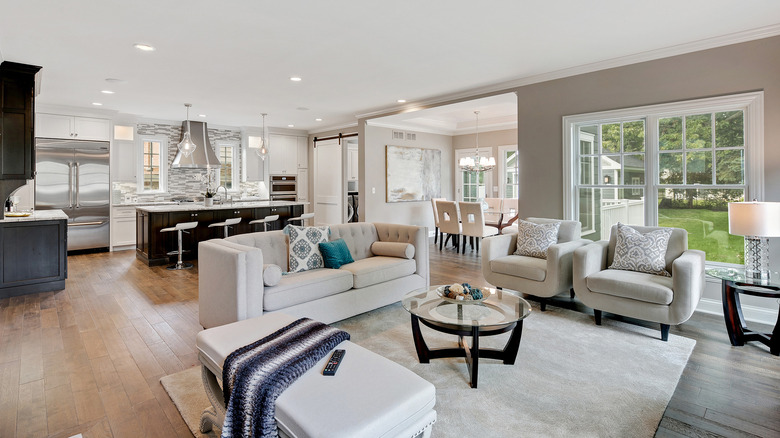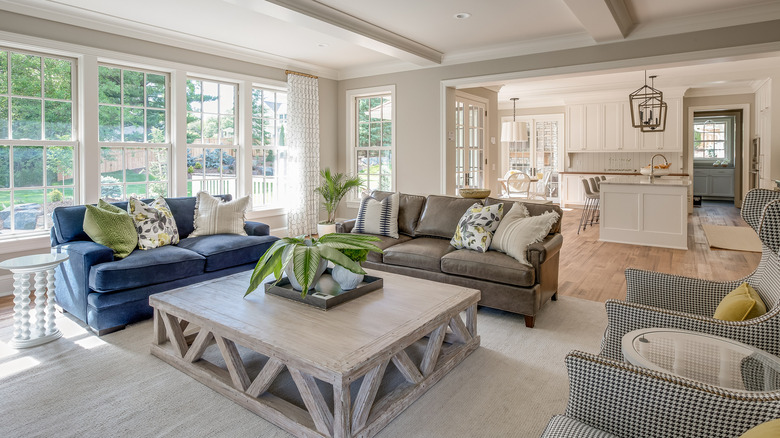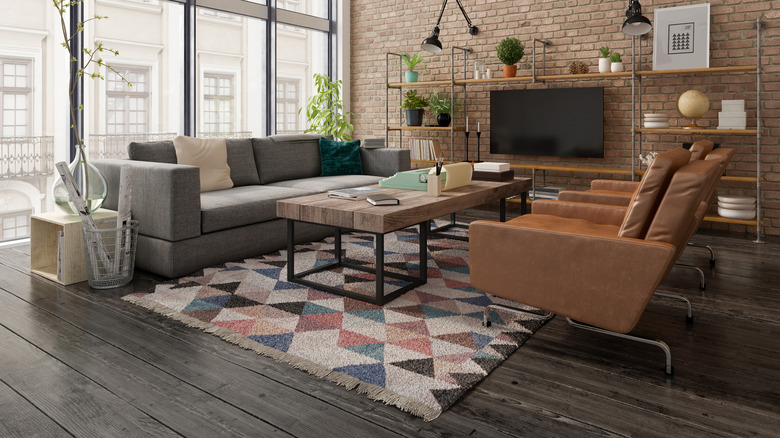Does Your Living Room Furniture Need To Match?
The age-old question: does your living room furniture have to match to be aesthetically pleasing? While this thought might not occupy your entire day, you might occasionally wonder if those matching chairs are too uniform or if the mismatched sofa and lazy boy look chaotic. Every home's interior design is different and might require a certain level of consistency or lack thereof to work. It comes down to the individuals living there and their ideas about the décor.
However, the query still remains, so should the furniture look alike to present a gratifying space? To match or not to match, that is the question. Having uniformity is always an easier approach to decorating and design, allowing you more time to focus on other aspects and worry less about finding options that still sit well together despite not being the same print, pattern, shape, or material. On the other hand, opting for an eclectic theme will allow you to channel your inner designer and think outside the box. According to LaZboy, the days of complete furniture sets that all look alike are over, and mixing fabrics, woods, or other mediums is the way to go.
Mixed furniture is in
There is nothing wrong with wanting a simple, curated living room that flows nicely and furniture that works well together. Owning a few pieces with the same make or model is fine and can help produce a serene backdrop for other items. With that in mind, you don't want to have every chair, sofa, table, bookshelf, or footstool match completely. A room filled with identical items lacks depth and can become boring or monotonous. Adding in mixed mediums will help create dimension, producing a warm, inviting space that gives off the opposite vibe from an office building or other corporate setting.
That being said, this doesn't mean you can't build a cohesive aesthetic that blends nicely and produces a clean, non-chaotic space. Mixing furniture doesn't have to produce an eclectic setting and can still work with minimalistic dynamics. To stick with a simple design despite mismatched furniture, Mad About The House says you should pick a palette with limited selections. Think black, white, and one splash of bright or bold color, or opt for a neutral theme that incorporates tan, beige, and brown. By sticking to an uncomplicated color scheme, you're decreasing the business of many different hues and furnishings and making everything more cohesive.
Play around with mediums
Another great tip for mixing furniture is to stick to the number three. Decoholic notes that you're avoiding too much distraction or disorder by placing three varying pieces in any room. Settling for two elements is too little and could leave the space looking random, so adding an extra furnishing or style negates that. It is also helpful to try to find items with similarities. While they shouldn't match precisely, tables with close wood shades or rustic items complementing one another will create balance. If you're moving furniture around from other rooms, take stock of what you have and keep selections with similar characteristics together. This will pull the room together without requiring matching sets.
Sometimes making a mismatched furniture theme work is more about presentation than anything. Scale, color, and design can all be manipulated to flow, and using different sizes to build scope can add a "matching" appearance. According to Tidbits & Twine, pairing similar shapes will present the appearance of equal items, even if they are notably different. For example, if you have rounded chairs that aren't the same size, pattern, or material, the shape will still blend them, producing a pleasing finish. Decoholic also recommends using two bigger pieces with a smaller one to add dimension and fluidity. This combination ensures a space doesn't look too cluttered or empty and gives off a well-planned air. So, don't be afraid to mix and match — it's all part of the decorating fun.


